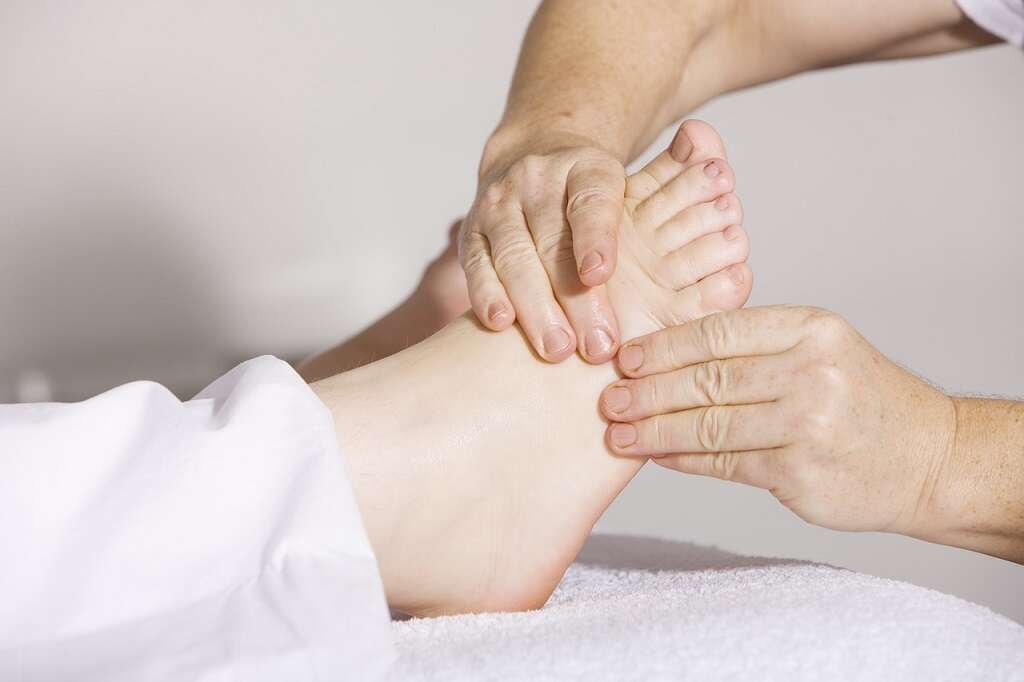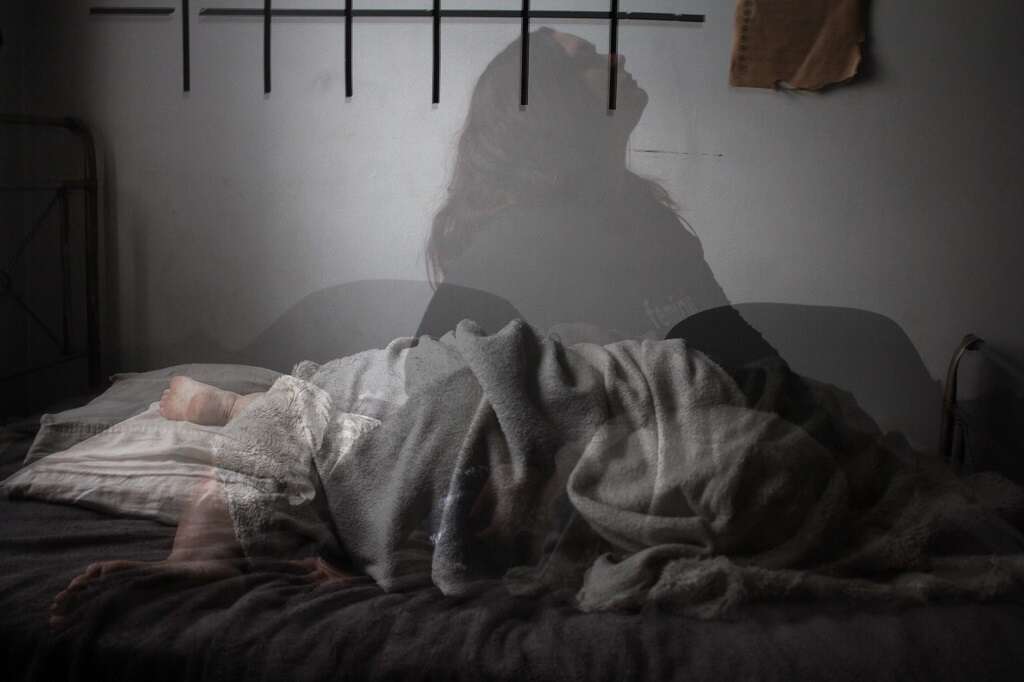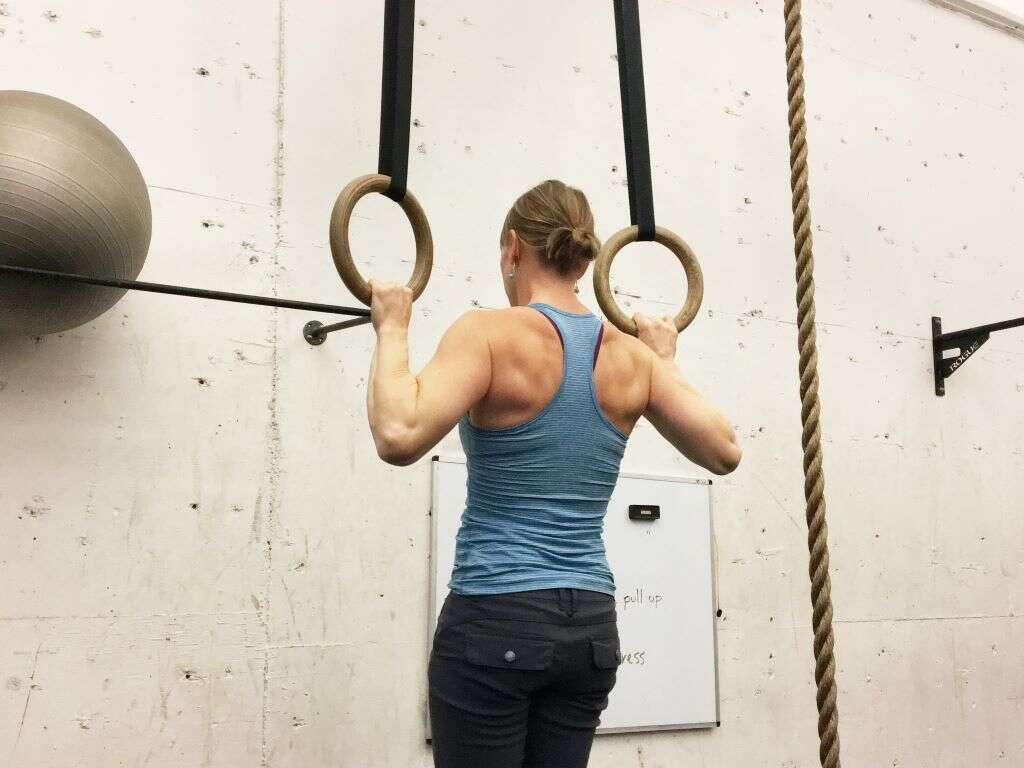10 Allodynia Symptoms
 Article Sources
Article Sources
- 1. 'Allodynia - StatPearls - NCBI Bookshelf.' National Center for Biotechnology Information, 11 Sept. 2020, www.ncbi.nlm.nih.gov/books/NBK537129/
- 2. 'Complex Regional Pain Syndrome - Symptoms.' Nhs.uk, 19 Oct. 2017, www.nhs.uk/conditions/complex-regional-pain-syndrome/symptoms/
- 3. 'Using Somatosensory Rehabilitation to Treat Allodynia.' RSDSA, 4 Jan. 2018, rsds.org/somatosensory-rehabilitation-allodynia/
Allodynia is a condition where people experience pain from a stimulus that's normally not painful. A gentle touch, the warmth of a bath or a kiss on the cheek can be agony.
It's believed to be due to increased excitability of the neurons within the nervous system, although studies on the cause are ongoing. It's common for allodynia to be a symptom of conditions, such as diabetes, fibromyalgia, migraines or complex regional pain syndrome, although it can occur on its own. It's important for those with suspected allodynia to see a doctor, as there are ways to help manage the pain or underlying condition.1‘Allodynia - StatPearls - NCBI Bookshelf.’ National Center for Biotechnology Information, 11 Sept. 2020, www.ncbi.nlm.nih.gov/books/NBK537129/
Pain From a Light Touch
Mechanical allodynia is a common type of the condition, and it has to do with touch. A brush on the arm, a light breeze or the touch of a feather on the skin typically causes a gentle, even pleasant sensation. However, a person with allodynia can experience this same sensation very differently. They can feel a burning, stabbing or stinging that can range from uncomfortable to unbearable.1‘Allodynia - StatPearls - NCBI Bookshelf.’ National Center for Biotechnology Information, 11 Sept. 2020, www.ncbi.nlm.nih.gov/books/NBK537129/
Allodynia is a neuropathic pain, and it may stem from damage to the brain or nervous system. It's just as real, however, as pain from an injury.3‘Using Somatosensory Rehabilitation to Treat Allodynia.’ RSDSA, 4 Jan. 2018, rsds.org/somatosensory-rehabilitation-allodynia/

Sensitivity to Pressure
Along with a light touch, gentle pressure can be painful for a person with allodynia. They may not be able to stand wearing clothing, such as socks or a coat. This can disrupt a person's daily life, as even getting dressed could be painful and draining.
Allodynia can sometimes be managed and even decreased, although there's no known cure. In some cases, addressing the underlying condition or damage can help or specific therapies that can help adjust the nervous system.3‘Using Somatosensory Rehabilitation to Treat Allodynia.’ RSDSA, 4 Jan. 2018, rsds.org/somatosensory-rehabilitation-allodynia/

Sensitivity to Temperature
The sense of touch is used to gauge temperature as well as pressure, so allodynia can affect the way people experience warmth and cold. Comfortable warmth from holding a mug of tea or the refreshing sensation of a cool stream of water can feel unbearable for someone with allodynia.
This is called a thermal, rather than tactile, response. A person with allodynia may experience thermal pain, tactile pain or both.1‘Allodynia - StatPearls - NCBI Bookshelf.’ National Center for Biotechnology Information, 11 Sept. 2020, www.ncbi.nlm.nih.gov/books/NBK537129/

Localized Pain
Allodynia may not occur in every part of a person's body. It's common for a specific side of the body or a portion of the skin to experience the pain, while other areas of the body experience sensation normally.
This can be useful in helping diagnose and manage allodynia. A doctor can test for affected regions of pain, and sometimes a specialist can guide patients with allodynia to use sensation on other parts of the body to help decrease the pain in affected areas.3‘Using Somatosensory Rehabilitation to Treat Allodynia.’ RSDSA, 4 Jan. 2018, rsds.org/somatosensory-rehabilitation-allodynia/

Tingling and Numbness
It's common for people with allodynia to also have areas of the body that feel numb or tingling. This may be caused by the same nerve damage that causes the allodynia.
This area of numbness is sometimes used by occupational therapists when doing rehabilitative therapy. Managing the numb areas can be less unpleasant than attempting to work with painful areas, and sometimes helping restore sensation in one part of the body can help decrease pain in the other.3‘Using Somatosensory Rehabilitation to Treat Allodynia.’ RSDSA, 4 Jan. 2018, rsds.org/somatosensory-rehabilitation-allodynia/

Muscle Weakness
Conditions that commonly cause allodynia can also cause swelling of the joints, muscle stiffness and tremors.2‘Complex Regional Pain Syndrome - Symptoms.’ Nhs.uk, 19 Oct. 2017, www.nhs.uk/conditions/complex-regional-pain-syndrome/symptoms/ Motor neuron deficits can make it harder for signals from the nervous system to reach the affected muscles. These issues combined with people struggling to move through pain can lead to weakness in affected areas.
A doctor may ask a person with suspected allodynia to perform strength tests. These may provide insight on what's happening to the nervous system and how to help.1‘Allodynia - StatPearls - NCBI Bookshelf.’ National Center for Biotechnology Information, 11 Sept. 2020, www.ncbi.nlm.nih.gov/books/NBK537129/

Changes in Reflexes
The hypersensitivity of the nervous system in someone with allodynia can cause unusual reflexes. They may jerk away from stimuli that the average person would not notice. The muscles could also contract in some cases, making it more difficult to move.2‘Complex Regional Pain Syndrome - Symptoms.’ Nhs.uk, 19 Oct. 2017, www.nhs.uk/conditions/complex-regional-pain-syndrome/symptoms/
This change in reflexes is commonly localized, only occurring in the areas of the body affected by allodynia. When a person is hyper-reflexive and their reactions aren't symmetrical, a doctor may suspect allodynia if pain symptoms are also present.1‘Allodynia - StatPearls - NCBI Bookshelf.’ National Center for Biotechnology Information, 11 Sept. 2020, www.ncbi.nlm.nih.gov/books/NBK537129/

Changeable or Progressive Pain
Allodynia pain can be changeable or progressive. The symptoms can seem more or less intense at different times. Flare-ups of intense pain can last for days or weeks.2‘Complex Regional Pain Syndrome - Symptoms.’ Nhs.uk, 19 Oct. 2017, www.nhs.uk/conditions/complex-regional-pain-syndrome/symptoms/ The pain can also progress, moving down a person's arm or from their arms into their legs, for example.
Some people with allodynia may be afraid to discuss these symptoms with their doctor due to a fear that their pain may not seem legitimate. However, these are common symptoms of allodynia.1‘Allodynia - StatPearls - NCBI Bookshelf.’ National Center for Biotechnology Information, 11 Sept. 2020, www.ncbi.nlm.nih.gov/books/NBK537129/

Insomnia
People with allodynia and related conditions commonly experience difficulty sleeping. It may be challenging to find a position that doesn't put pressure or touch on an affected area, or flashes of pain may wake someone or keep them awake.
Even when a person with allodynia is comfortable, however, they may still struggle with sleep due to emotional symptoms. The effects of chronic pain on a person can be wide reaching and cause struggles with every aspect of daily and nightly life.2‘Complex Regional Pain Syndrome - Symptoms.’ Nhs.uk, 19 Oct. 2017, www.nhs.uk/conditions/complex-regional-pain-syndrome/symptoms/

Depression and Anxiety
The chronic pain from allodynia can be isolating and overwhelming at times. Some people can experience insensitivity from loved ones who don't understand the condition. They may have tried many therapies without success. All of this can contribute to depression and anxiety.
People with allodynia may benefit from knowing they're not alone and that there are others with the same condition, as well as doctors and therapists working to find better methods of managing the condition.2‘Complex Regional Pain Syndrome - Symptoms.’ Nhs.uk, 19 Oct. 2017, www.nhs.uk/conditions/complex-regional-pain-syndrome/symptoms/











